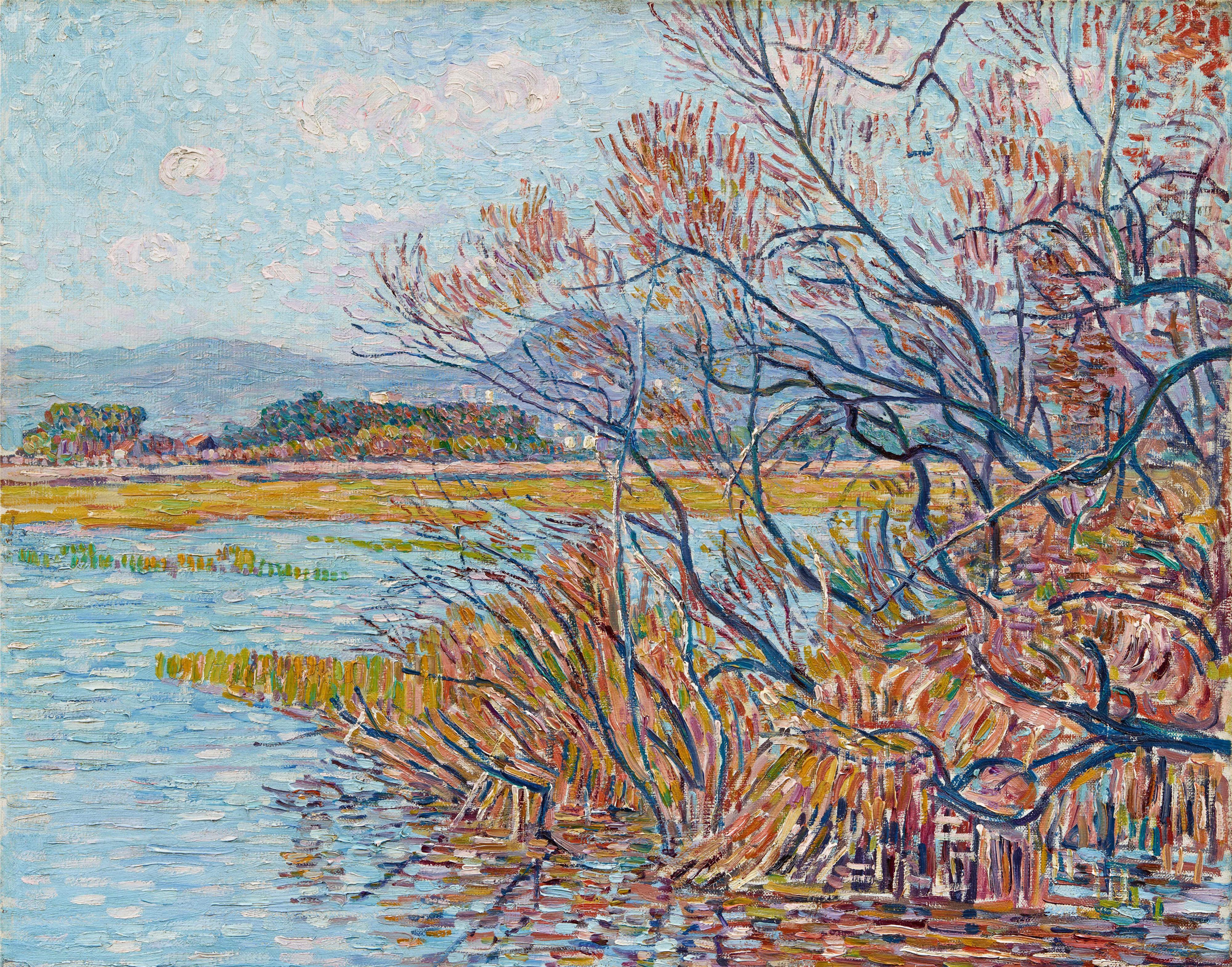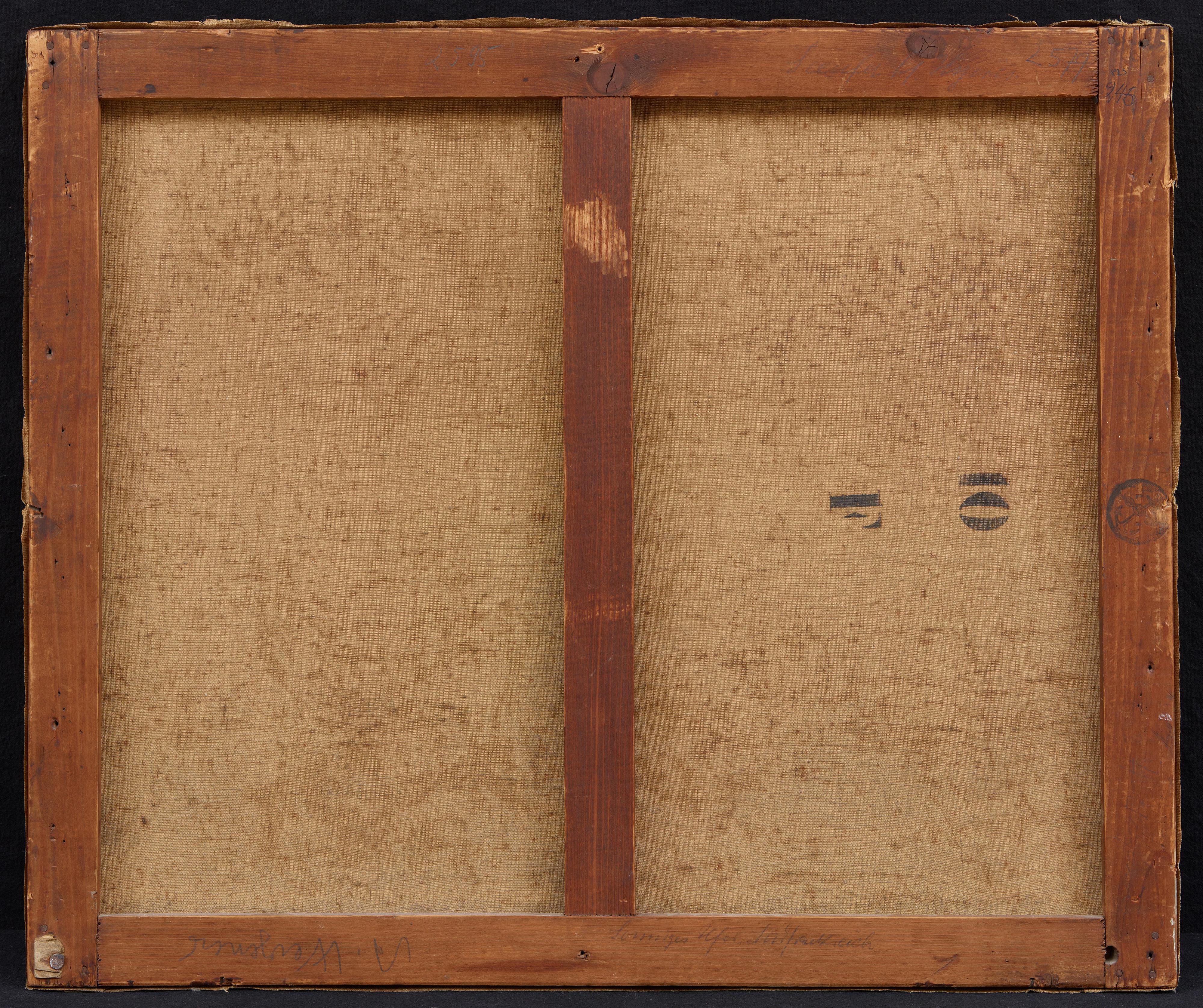Paul Baum
Überschwemmung bei Hyères mit Baumgestrüpp und Schilfgras am Ufer
Circa 1900
Oil on canvas. 46 x 55 cm. Framed. Signed 'Paul Baum' lower left. - In excellent condition with fresh colours.
More so than almost any other German impressionist, Paul Baum assimilated the pointillists’ ideas and technique into his work and transformed them into a style of his own. Born in 1859 in the Saxon town of Meissen and trained at the academy in Weimar, he became familiar with the impressionist paintings of Claude Monet and Camille Pissarro during a visit to Paris in 1890. After a brief impressionist phase, Baum soon turned to the more recent technique of the pointillists, in which the spectrum of colours is systematically broken up into pure tones and applied in small dabs of paint. He probably also saw this in the work of Theo van Rysselberghe, with whom he worked in the Belgian town of Knokke for a summer. From around 1890 Baum painted exclusively in the neo-impressionist style, which he maintained and refined for the rest of his career.
Apart from a few urban themes at the beginning of his oeuvre, Baum was primarily interested in landscape painting. The motif of trees, particularly willows along a stream – or a river, as in the case of our picture – was among his favourite subjects. Here the water surfaces provided diverse possibilities for charming reflections. In the picture offered here, “Überschwemmung bei Hyères”, he has used a pointillist painting technique to capture the turbulent water but also the branches stretching into the image from the right and the reeds. However, in contrast to Georges Seurat, for example, Baum applied his paint in a manner that is freer over all – usually in the form of shorter or longer strokes and little fields of colour that provide this landscape image with movement and atmosphere. In chromatic terms, it moves within a harmony between red-orange tones and light blue.
Catalogue Raisonné
Hitzeroth F 217 (Q5)
Provenance
Private collection, Bremen
Exhibitions
Kassel 1959 (Städtische Kunstsammlung zu Kassel), Paul Baum, no. 264 (supplementary catalogue of 1960)




